 |
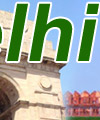 |
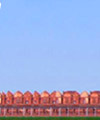 |
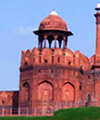 |
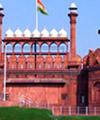 |
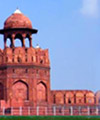 |
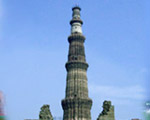 |
||
|
||||||||||
|
Traditional Crafts Delhi has been attracting the best of musicians, dancers and painters for centuries. This is natural because it has been the seat of power for many dynasties. The rulers were the patrons themselves. Today, a travel to Delhi will acquaint you with the fact that Delhi is a great center of art. Shahjahanabad, Old Delhi as it is called today, is the richest of the legacies: not only because it is the closest to us chronologically but also because the Mughals were great patrons of arts and crafts. An important craft that developed during the time was ivory carving. But then came the ban on ivory. The skilled craftsmen had no option but change their raw material: they started using bones of buffaloes and camels instead of ivory. Go to Matia Mahal's Pahadi Bhojla and you will find umpteen shops of jewelers who fashion beautiful bangles and necklaces out of bone. Creating magic with golden thread embroidery or euphoria with semi-precious stones, there are the zardozis in the neighborhood. Zardozi is the art of embroidery with gold thread. These craftsmen work intricate designs on silk, velvet, and even tissue materials. Insignias, pulpit covers, embroidery on the robes of bishops and even the Pope are all created here.
The medicinal value of silver paper (varak) is well known. Thin sheets of silver paper are still wrapped around sweets and even betel leaves. If you are looking for the authentic one, go to Matia Mahal again. A few of the craftsmen who beat silver into thin sheets by hand still live here. There was a time when there were so many of them that you could just follow the sound of the hammer and reach them. Today you have to do a little asking around to reach the small workshops. The famed meenakari work, where paint is embossed on silver or gold to give it the look of a precious stone, was once a thriving business of Shahjahanabad. Turbulence of Delhi, ever since Nadir Shah and later the colonial rule, pushed the artisans away to peaceful climes. This group moved partly to Rajasthan, while those who make bangles from lac moved to Hyderabad in the Deccan. Lacquer work bangles are one of the old art forms still alive in Shahjahanabad. Bright shades of yellow, red, and blue are perked up with tiny pieces of mirrors and gold-colored borders with beads to add that extra touch. Common to many parts of Delhi are the potters. Not only do they fashion pots for the hot summer, which, in spite of refrigerators, are still greatly in demand, they also fashion beautiful clay and papier-mâché dolls. These clay dolls, some as toys and some as decorations and some even as clay idols during festivities, are still popular with the rural-urban migrants. The special areas in the capital where these toys are available in can, bamboo, tin and pottery, and sometimes involving the ingenious use of Indian textiles and costume jewelry, are Ajmeri Gate, Chandni Chowk, Hauz Khas, Paharganj and Ramakrishna Puram. Earthenware figures can be obtained in many places including Ajmeri Gate and Sarojini Nagar. There's more: making of incense sticks, ittars (perfumes), brass
moulding, and so on. Shahjahan's gift to the country did not stop
with the Taj Mahal…
| ||||||||||
|
||||||||||
|---|---|---|---|---|---|---|---|---|---|---|